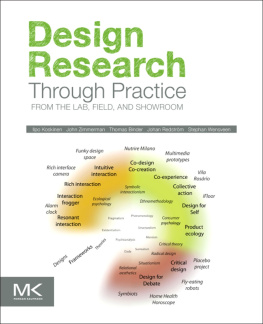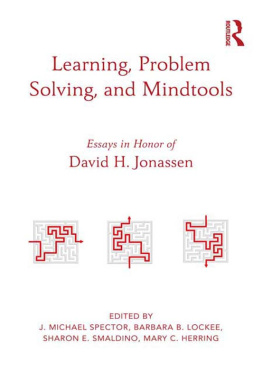Matt Bower - Design of technology-enhanced learning : integrating research and practice
Here you can read online Matt Bower - Design of technology-enhanced learning : integrating research and practice full text of the book (entire story) in english for free. Download pdf and epub, get meaning, cover and reviews about this ebook. year: 2017, genre: Children. Description of the work, (preface) as well as reviews are available. Best literature library LitArk.com created for fans of good reading and offers a wide selection of genres:
Romance novel
Science fiction
Adventure
Detective
Science
History
Home and family
Prose
Art
Politics
Computer
Non-fiction
Religion
Business
Children
Humor
Choose a favorite category and find really read worthwhile books. Enjoy immersion in the world of imagination, feel the emotions of the characters or learn something new for yourself, make an fascinating discovery.
- Book:Design of technology-enhanced learning : integrating research and practice
- Author:
- Genre:
- Year:2017
- Rating:3 / 5
- Favourites:Add to favourites
- Your mark:
- 60
- 1
- 2
- 3
- 4
- 5
Design of technology-enhanced learning : integrating research and practice: summary, description and annotation
We offer to read an annotation, description, summary or preface (depends on what the author of the book "Design of technology-enhanced learning : integrating research and practice" wrote himself). If you haven't found the necessary information about the book — write in the comments, we will try to find it.
Matt Bower: author's other books
Who wrote Design of technology-enhanced learning : integrating research and practice? Find out the surname, the name of the author of the book and a list of all author's works by series.
Design of technology-enhanced learning : integrating research and practice — read online for free the complete book (whole text) full work
Below is the text of the book, divided by pages. System saving the place of the last page read, allows you to conveniently read the book "Design of technology-enhanced learning : integrating research and practice" online for free, without having to search again every time where you left off. Put a bookmark, and you can go to the page where you finished reading at any time.
Font size:
Interval:
Bookmark:
Design of Technology-Enhanced Learning
Integrating Research and Practice
Integrating Research and Practice
By
Matt Bower
Department of Educational Studies, Macquarie University, Sydney, Australia

United Kingdom North America Japan India Malaysia China
Emerald Publishing Limited
Howard House, Wagon Lane, Bingley BD16 1WA, UK
First edition 2017
Copyright 2017 Emerald Publishing Limited
Reprints and permissions service
Contact:
No part of this book may be reproduced, stored in a retrieval system, transmitted in any form or by any means electronic, mechanical, photocopying, recording or otherwise without either the prior written permission of the publisher or a licence permitting restricted copying issued in the UK by The Copyright Licensing Agency and in the USA by The Copyright Clearance Center. Any opinions expressed in the chapters are those of the authors. Whilst Emerald makes every effort to ensure the quality and accuracy of its content, Emerald makes no representation implied or otherwise, as to the chapters suitability and application and disclaims any warranties, express or implied, to their use.
British Library Cataloguing in Publication Data
A catalogue record for this book is available from the British Library
ISBN: 978-1-78714-183-4 (Print)
ISBN: 978-1-78714-182-7 (Online)
ISBN: 978-1-78714-911-3 (Epub)
 |  |
To my wife, who cared not one iota about what I was writing, but generously and kindly made it possible for me to write it.
To my boys, Dan and Zac, who are the apple of my eye.
To educators and researchers everywhere who put their heart into what they do.
T echnology is changing everything in our world, including education. People have the ability to access information and communicate anytime and almost anyplace through a range of increasingly powerful and easy to use apps. In education, technology enables students and teachers to rapidly collect data, represent knowledge, share perspectives, digitally construct, and collaborate from almost any location. However, too often the use of technology for learning is presented as a panacea that will solve all educational ills. The reality is that simply using contemporary technologies in education does not guarantee a successful lesson, and in fact, using technology poorly can render a learning experience confusing and meaningless.
As technologies change, it is crucial that educators (school teachers, academics, pre-service teachers, and educational designers) respond in a principled fashion based upon a deep understanding of pedagogical issues, rather than haphazardly based on intuitive or superficial reasoning. Maintaining a focus on pedagogical issues means that educators can avoid being distracted by the novelty of new technologies and concentrate upon how each technology is influencing interaction and learning. Accordingly, in order to develop an accurate and confident command of technology-enhanced learning issues, educators need to understand the research of the field. Similarly, if learning technology researchers want to have far-reaching positive impact, their work needs to penetrate beyond the surface technological features through the underlying learning and teaching issues at stake. Understanding the key issues and research across technologies enables researchers to accurately position their work and demonstrate how it is making a contribution to the field overall.
As a teacher educator and educational researcher specializing in the technology area, I frequently lamented that the technology-enhanced learning literature was disorganized and disparate for educators who wanted to utilize it. This was a problem because most educators simply do not have time to find and distil learning technology research relating to their area of focus. Why wasnt there a single resource that synthesized the key learning technology literature in a way that educators could immediately apply? At the same time, educational technology researchers are incredibly time-poor, and while they have immense expertise in their specific sub-areas, the breadth of the technology-enhanced learning literature means that it can be difficult to acquire an accurate sense of the empirical research as a whole. This is particularly true when it comes to understanding research relationships between different technological platforms from an educational design and practice perspective.
This book directly responds to these maladies by drawing technology-enhanced learning research and practice closer together. It does this by synthesizing the general and empirical learning technology literature to clearly identify the key educational potentials, issues, and design considerations relating to technology-enhanced learning. By examining this synthesis of research findings, educators can immediately adopt an evidence-based approach in their designs, and researchers can instantly position their work within the broad context of technology-enhanced learning field.
This book has been designed to enable readers to construct an integrated understanding of the key issues surrounding technology-enhanced learning design. Chapter 1 considers the broader context of designing for learning using technology, including its key drivers at school and university levels. Without an understanding of the broader context, it is impossible for educators and researchers to reliably situate their work in a way that responds to social needs. An understanding of the broader socio-political context can also provide motivation for the use of technology in learning. However, the importance of adopting a critical approach to the design of technology-enhanced learning is emphasized.
Chapter 2 briefly introduces the Technology Pedagogy And Content Knowledge (TPACK) framework as a tool for structuring educator thinking. Technology, pedagogy, and content are indeed essential aspects of technology-enhanced learning design, and a focusing on these elements has undoubtedly led to the popularity of the TPACK model. However, the chapter also poses critical reflections on the TPACK framework in terms of its ability to support learning design practice.
In order to establish a solid conceptual foundation for analyzing technology-enhanced learning, Chapters 35 provide a general overview of pedagogy, technology, and content, respectively. Educators and researchers need to have an overarching understand how pedagogy operates on different levels, and the different types of pedagogies at each level, if they are to effectively analyze and utilize different types of technology in education (Chapter 3). Similarly, both educators and researchers need to have general frameworks for thinking about technology selection and utilization, which is why the concept of affordances and multimedia learning effects are interrogated in Chapter 4. The content that we teach and assess may be represented and shared in different ways using technology, and these issues are explored in Chapter 5.
Chapter 6 builds on previous chapters to unpack design thinking what it involves and why it can be hard to learn. Importantly, teaching is positioned as a design science. Design is the nexus of scientific and artistic thinking, whereby novel and intrinsically valuable solutions emerge based on integrative knowledge. Seeing teaching as a design science helps educators and researchers to maintain a focus on understanding the elements that are most important to the design of effective learning tasks and the processes that help educators to optimize their designs. The field of Learning Design is also introduced, including the various ways it can support educators design work.
Font size:
Interval:
Bookmark:
Similar books «Design of technology-enhanced learning : integrating research and practice»
Look at similar books to Design of technology-enhanced learning : integrating research and practice. We have selected literature similar in name and meaning in the hope of providing readers with more options to find new, interesting, not yet read works.
Discussion, reviews of the book Design of technology-enhanced learning : integrating research and practice and just readers' own opinions. Leave your comments, write what you think about the work, its meaning or the main characters. Specify what exactly you liked and what you didn't like, and why you think so.

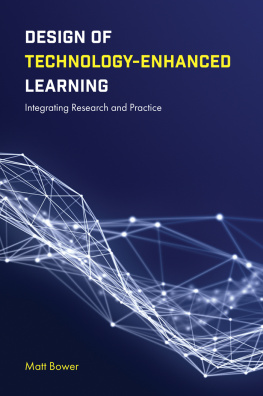
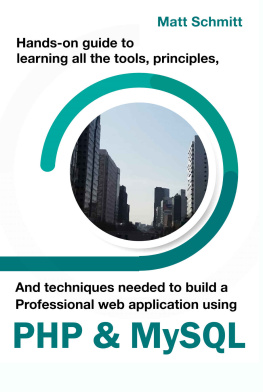
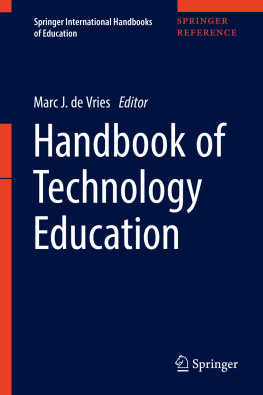
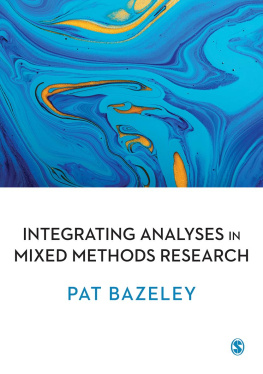
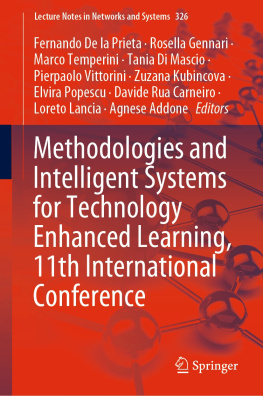


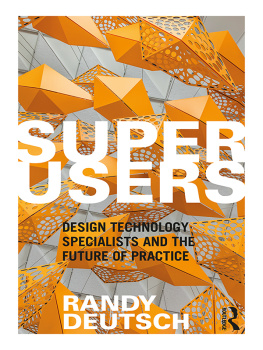
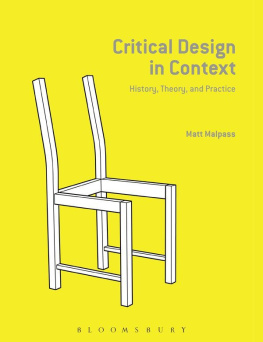
![Stefan Baumgartner [Stefan Baumgartner] - Front-End Tooling with Gulp, Bower, and Yeoman](/uploads/posts/book/120519/thumbs/stefan-baumgartner-stefan-baumgartner-front-end.jpg)
